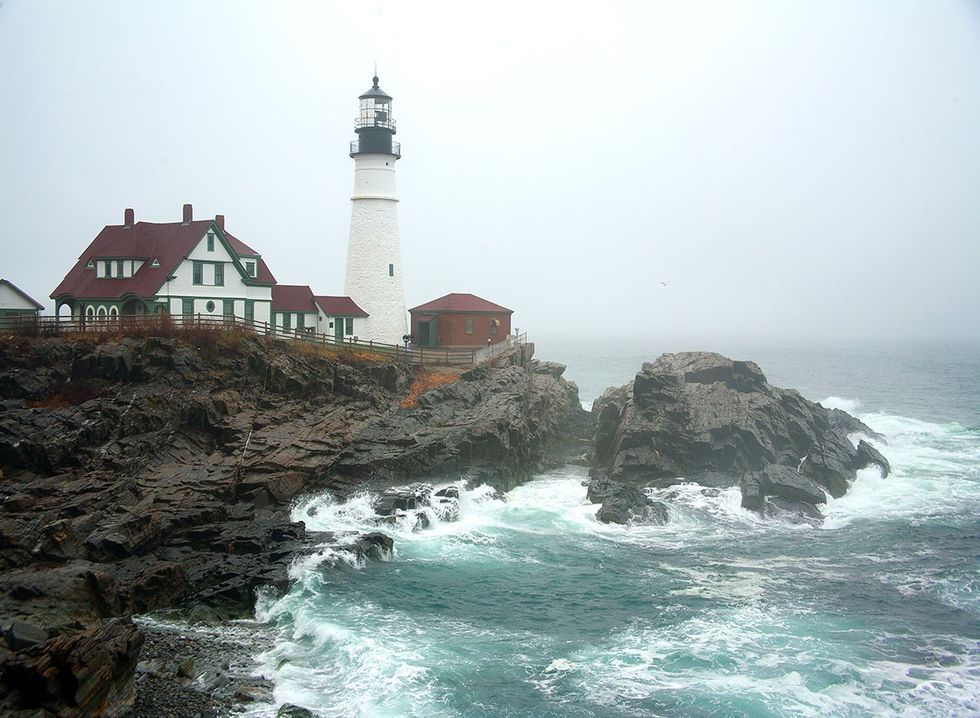Are new places around the globe now getting hit by unusual extreme weather? “Due to global warming, global climate models predict hurricanes will likely cause more intense rainfall and have an increased coastal flood risk due to higher storm surge caused by rising seas,” says Angela Colbert, Ph.D., via NASA Science. “Additionally, the global frequency of storms may decrease or remain unchanged, but hurricanes that form are more likely to become intense.” Here are 5 places hurricanes are now striking, which were rarely impacted in the past.
RELATED: “Severe Weather” Could Bring Tornadoes Here.
1. Northeast United States
Shutterstock
Historically, hurricanes tend to affect the southeastern U.S. However, with warmer waters, storms are now traveling farther north, impacting areas like New York, Connecticut, and Massachusetts more frequently. “It is not uncommon for New England to be impacted more than once in a given season,” says the Northeast States Emergency Consortium. “The area has been impacted by two or more tropical storms or hurricanes in one season a total of 11 times. The most notable season was 1954, when hurricanes Carol, Edna, and Hazel impacted the region.”
2. Western Europe
Shutterstock
While hurricanes typically form in the Atlantic and hit the Americas, storms like 2017’s Hurricane Ophelia have made their way to Western Europe, affecting places like Ireland and the UK. “As our climate changes, warmer waters in the North Atlantic could lead to hurricanes retaining their intensity over greater distances, increasing the frequency with which such ‘super storms’ occur in western Europe,” according to BBC Science Focus.
3. Canada’s Atlantic Coast
Shutterstock
Although hurricanes typically weaken by the time they reach Canada, storms like Hurricane Fiona in 2022 have started to bring stronger impacts to coastal areas like Nova Scotia and Newfoundland. Named storms, hurricanes and major hurricanes can cause significant rainfall, damaging winds, high waves and storm surge, and these impacts are expected to be even more significant with climate change,” says Environment and Climate Change Canada. “Global ocean temperatures hit a record high in February 2024 and North Atlantic temperatures have been at record highs for more than a year. Warmer water in the tropical Atlantic Ocean is expected to increase the number of storms this year. Overall, scientists have already seen an indication of an increase in the global proportion of category 3-5 hurricanes over the past four decades, and with climate change, the intensity of the strongest hurricanes is expected to increase globally.”
4. Southern California

Hurricanes rarely hit the U.S. West Coast, but recent years have seen storms like Tropical Storm Hilary affect parts of Southern California and Baja California, regions usually untouched by tropical storms. But what does this mean for the future? “An oft-asked question this week: will global warming increase the odds of landfalling tropical cyclones in California? My answer: It’s plausible, to a modest but probably not very large degree,” Daniel Swain, a climate scientist at UCLA, says in a blog post. “However, there have not yet been any formal studies looking into this.”
5. The Mediterranean
Shutterstock
Known for its temperate climate, the Mediterranean has seen the emergence of “medicanes” (Mediterranean hurricanes), affecting countries like Greece and Italy, which historically are not prone to hurricanes. These regions are starting to experience hurricanes or strong tropical storms more often due to shifts in global weather patterns, driven by climate change. “We are confident that climate change is supercharging the rainfall associated with such storms,” University of Reading professor Liz Stephens tells The Guardian.




